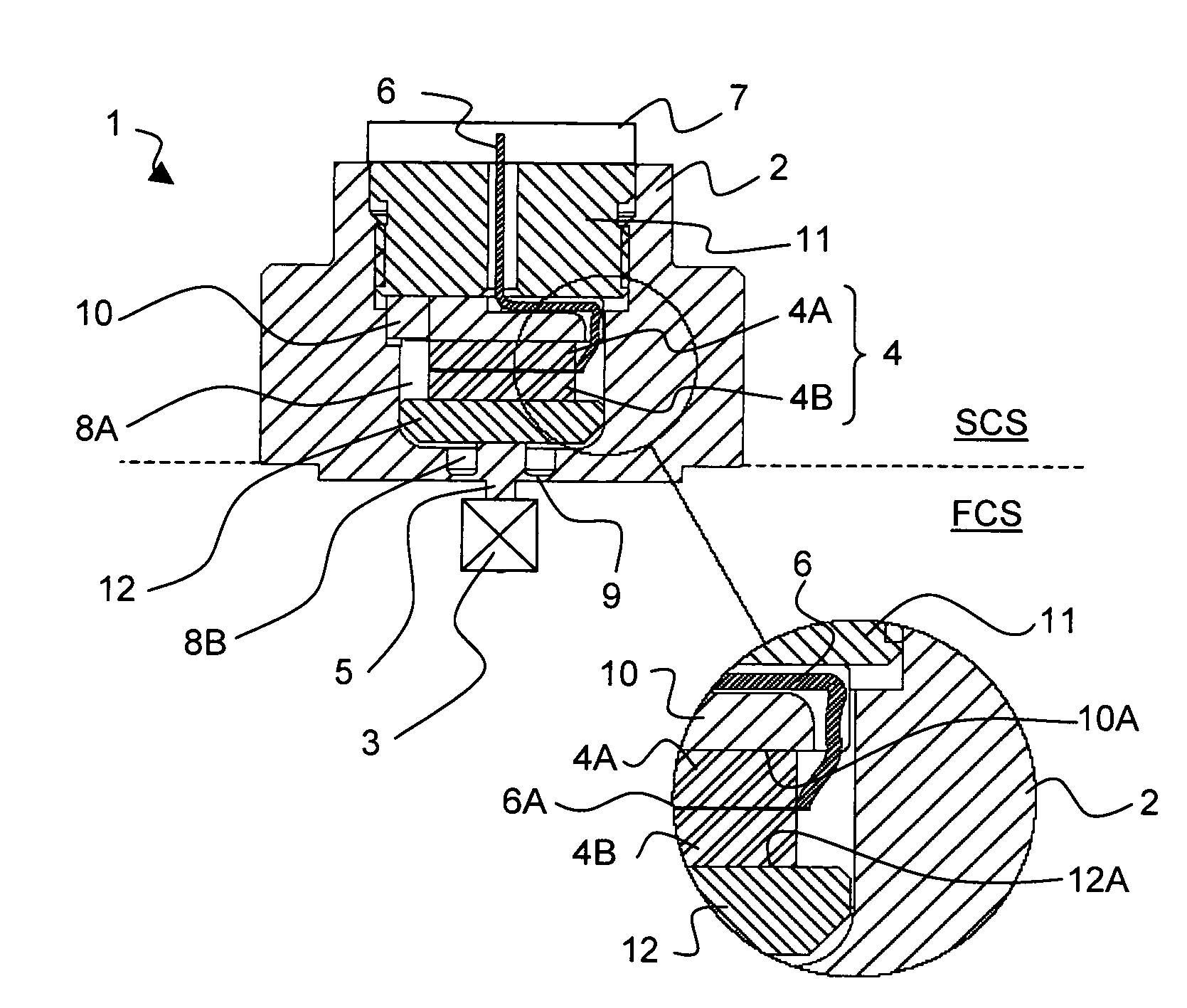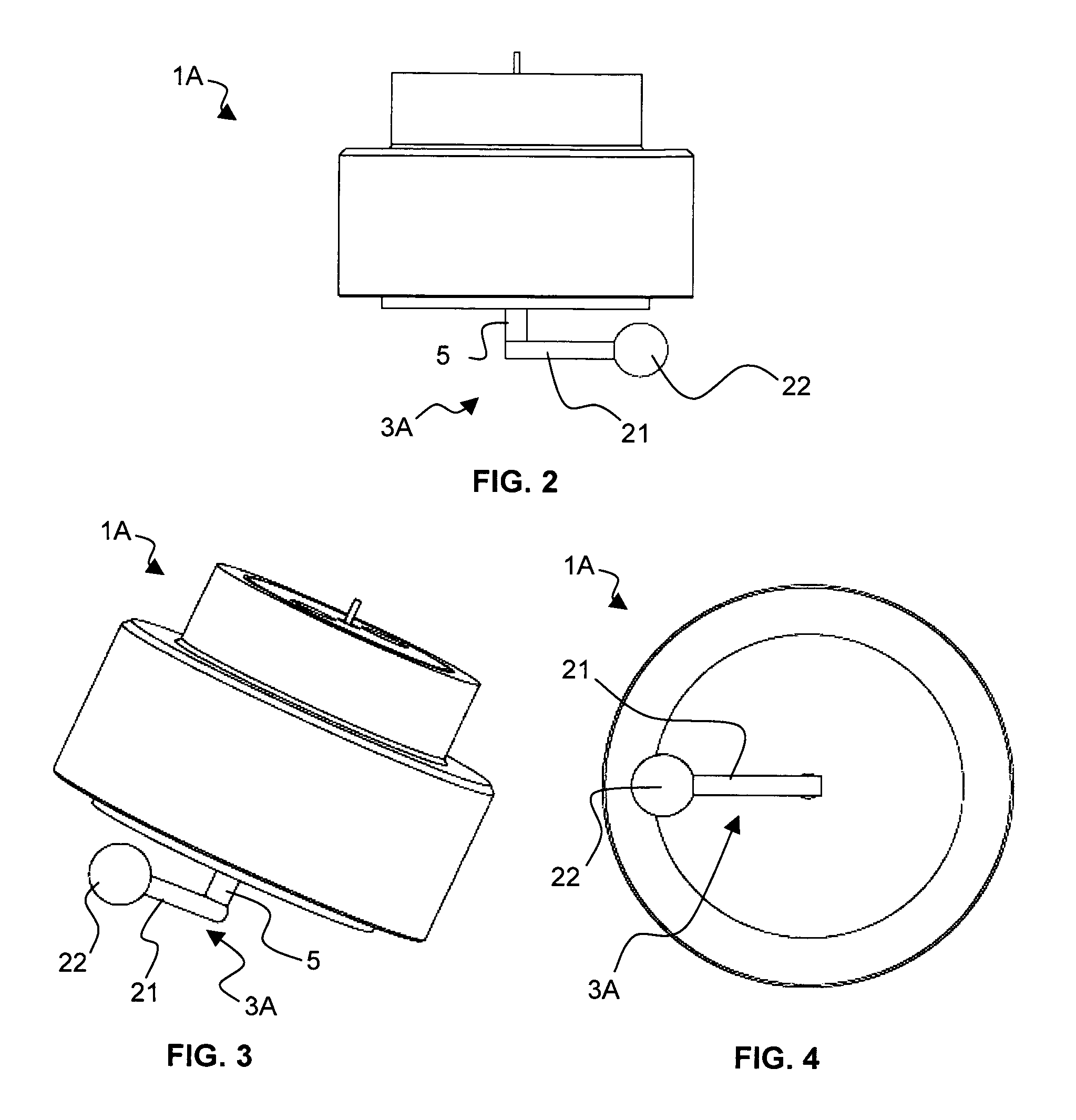Density and Viscosity Sensor
a density and viscosity sensor and density sensor technology, applied in the direction of instruments, specific gravity measurement, measurement devices, etc., can solve the problems of high intrusion of measuring devices, limited accuracy of such devices, and a typical size of several centimeters of transducers, so as to improve the displacement to volume ratio and reduce the measurement time.
- Summary
- Abstract
- Description
- Claims
- Application Information
AI Technical Summary
Benefits of technology
Problems solved by technology
Method used
Image
Examples
first embodiment
[0069]FIGS. 2, 3 and 4 are side, perspective and bottom views schematically showing a sensor for measuring density and viscosity of a fluid 1A of the invention, respectively. In this embodiment, the resonating element 3A is under the form of a beam 21, substantially straight, attached at one end to the housing 2 by the mechanical coupling element 5 and comprising, at the other end, a spherical mass 22. The beam 21 is made of a wire having a circular cross-section or an elliptical cross-section.
[0070]FIGS. 5, 6 and 7 are side, perspective and bottom views schematically showing a sensor for measuring density and viscosity of a fluid according to a second embodiment 1B of the invention, respectively. In this embodiment, the resonating element 3B is under the form of a non-symmetrical U beam comprising a suspended mass at one end. More precisely, the resonating element 3B comprises a first beam portion 31, a second beam portion 32 bent according to a U, a third beam portion 33. The fir...
fourth embodiment
[0111]An example of a dual mode resonator is described below base on the fourth embodiment shown in FIGS. 11 to 13.
[0112]The resonating element is a paddle shaped beam having an angle with the axe of the excitation movement to allow excitation / detection of vibration modes in the plane of the paddle and perpendicularly to this plane.
[0113]The first resonance mode is characterized by a first resonant frequency F1 and a first quality factor Q1. This mode corresponds to the paddle oscillating perpendicularly to its plane. In this mode, the paddle moves a large volume of fluid. Consequently, the first resonant frequency F1 is highly sensitive to fluid density. The second resonance mode is characterized by a second resonant frequency F2 and a second quality factor Q2. This mode corresponds to the paddle oscillating within its plane. In this mode, the paddle mostly shears the surrounding fluid. Consequently, the second resonant frequency F2 is quite insensitive to fluid density while being...
PUM
| Property | Measurement | Unit |
|---|---|---|
| density | aaaaa | aaaaa |
| density | aaaaa | aaaaa |
| temperature | aaaaa | aaaaa |
Abstract
Description
Claims
Application Information
 Login to View More
Login to View More - R&D
- Intellectual Property
- Life Sciences
- Materials
- Tech Scout
- Unparalleled Data Quality
- Higher Quality Content
- 60% Fewer Hallucinations
Browse by: Latest US Patents, China's latest patents, Technical Efficacy Thesaurus, Application Domain, Technology Topic, Popular Technical Reports.
© 2025 PatSnap. All rights reserved.Legal|Privacy policy|Modern Slavery Act Transparency Statement|Sitemap|About US| Contact US: help@patsnap.com



